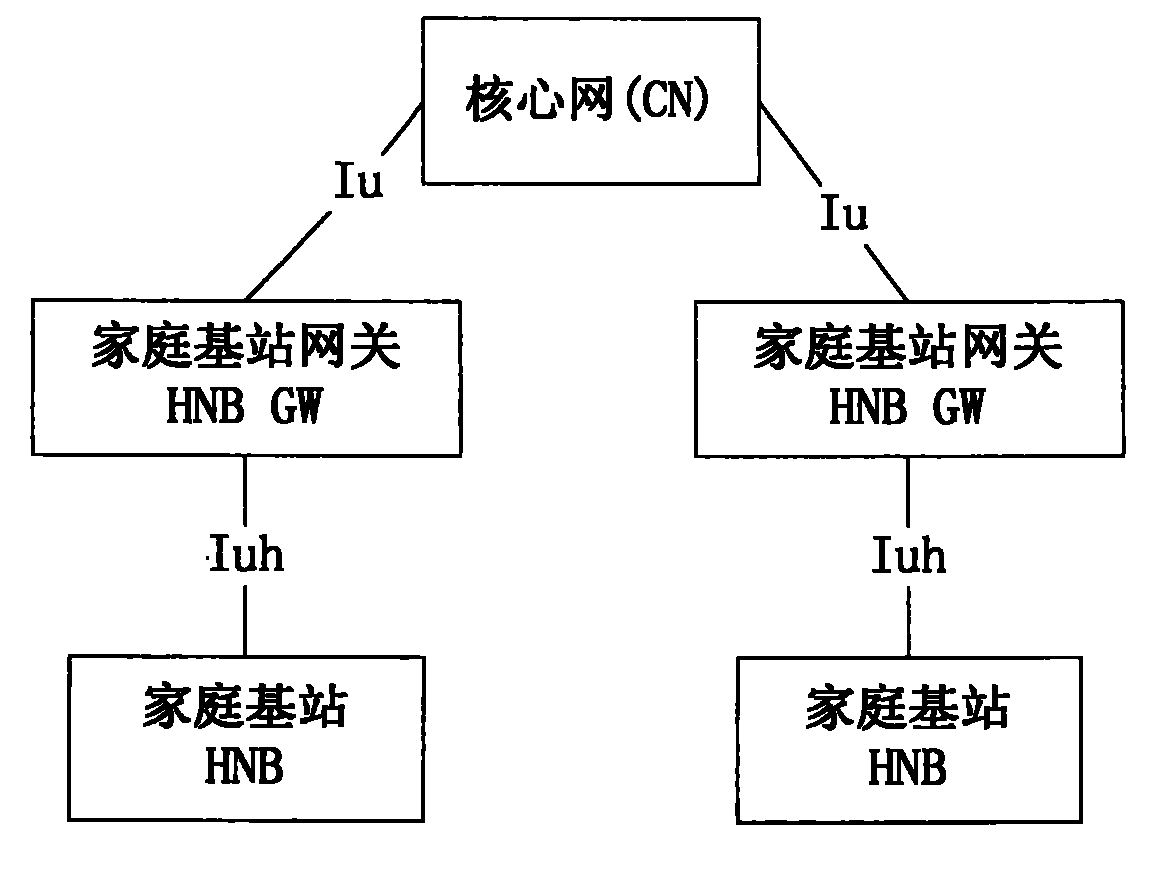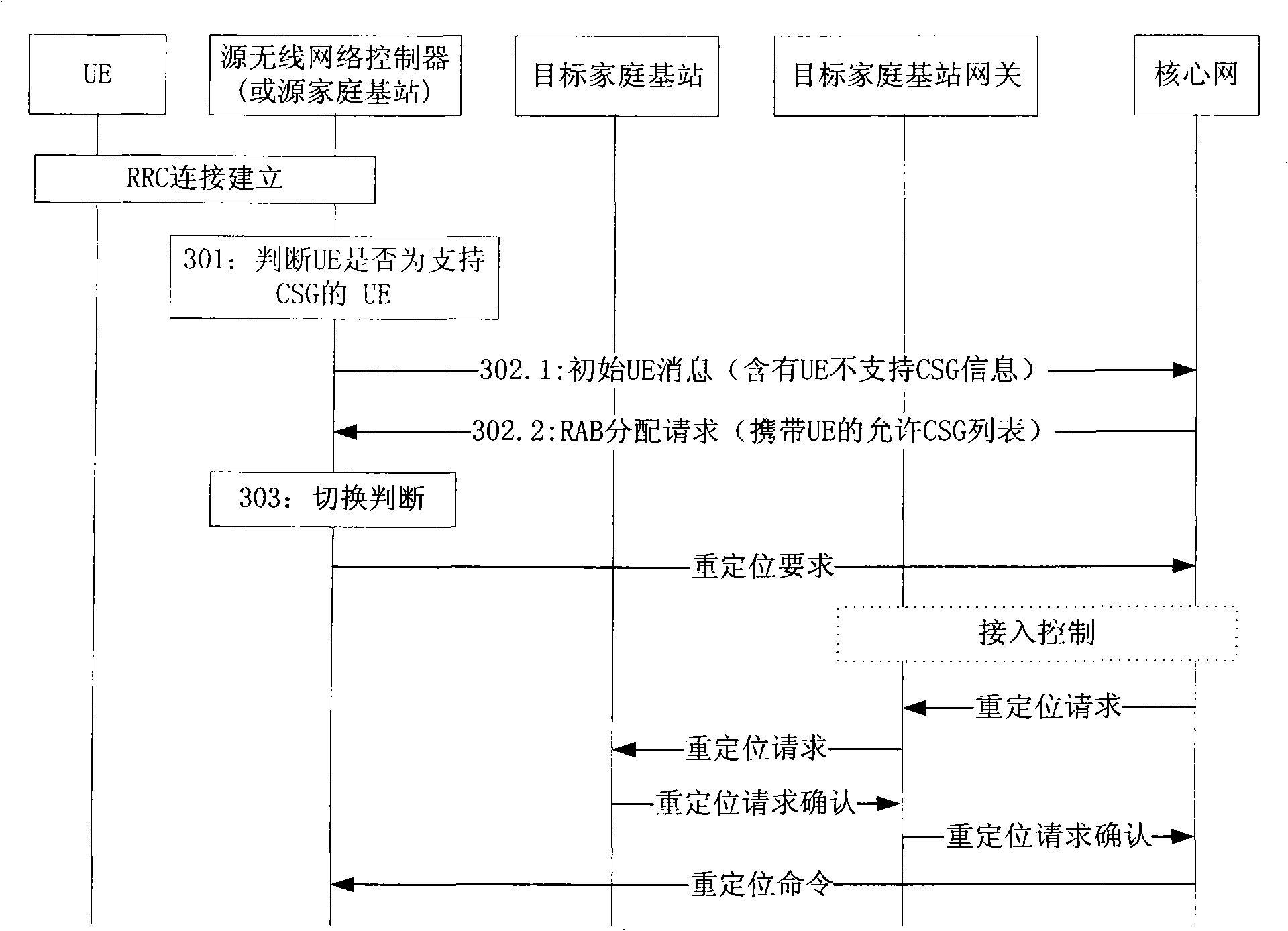Control method of switching from non CSG terminal to CSG cell
A control method and cell technology, applied in the communication field, can solve problems such as handover process failure and unpredictable subscription information, so as to reduce signaling impact and achieve simple effects
- Summary
- Abstract
- Description
- Claims
- Application Information
AI Technical Summary
Problems solved by technology
Method used
Image
Examples
Embodiment 1
[0048] Such as image 3 As shown, this embodiment is mainly aimed at the decision whether to switch to the target CSG cell after the source network element acquires the CSG list signed with the UE IMSI after the UE directly enters the macro base station (or home base station) without introducing new signaling. Processing flow:
[0049] Step 301: After the UE completes the access procedure, the RNC (or home base station) judges that the UE does not support CSG according to the indication of whether to support CSG or the version information carried in the UE air interface capability information;
[0050] Step 302: The RNC (or home base station) notifies the CN of whether the UE supports the CSG capability in the Initial UE Message (initial UE message) sent to the CN. If the UE does not support the CSG capability, the core network can pass the RAB ASSIGNMENT REQUEST (RAB assignment request message) sends the UE's IMSI subscribed CSG list to the RNC;
[0051] Step 303: The RNC (...
Embodiment 2
[0055] Such as Figure 4 As shown, this embodiment is mainly aimed at the processing flow of deciding whether to switch to the target CSG cell after the UE directly enters the source cell, and obtains the CSG list signed with the UE IMSI by introducing a new signaling source network element:
[0056] Step 401: After the UE completes the access procedure, the RNC (or home base station) judges that the UE does not support CSG according to the indication of whether to support CSG or the version information carried in the UE air interface capability information;
[0057] Step 402: The RNC (or the home base station) completes the acquisition of the CSG list subscribed by the UE IMSI through a newly added query interaction message;
[0058] First, the RNC (or home base station) sends the white list acquisition request information (ALLOWEDCSG LIST REQUIRED) to the CN. After the CN receives it, it judges which UE the request is for according to its signaling connection, and then sends...
Embodiment 3
[0063] Such as Figure 5 As shown, this embodiment involves two source RNCs (or home base stations), RNC2 (or home base station 2) is the current source network element, and RNC1 (or home base station 1) initiates handover to RNC2 (or home base station 2) network element. This embodiment is mainly aimed at UE entering the source cell through handover, and carrying the CSG list information subscribed by IMSI in the relocation request, and RNC2 (or home base station 2) obtains the CSG subscribed by UE IMSI without introducing new signaling The processing flow of deciding whether to switch to the target CSG cell after the list.
[0064] Step 501: the source RNC1 (or home base station 1) sends a relocation request (RelocationRequired) to the core network, and carries no The list of CSGs subscribed by UEIMSI supporting CSG capability;
[0065] In other embodiments, the UE IMSI-subscribed CSG list may also be carried in other information elements of other messages, and the ultima...
PUM
 Login to View More
Login to View More Abstract
Description
Claims
Application Information
 Login to View More
Login to View More - R&D
- Intellectual Property
- Life Sciences
- Materials
- Tech Scout
- Unparalleled Data Quality
- Higher Quality Content
- 60% Fewer Hallucinations
Browse by: Latest US Patents, China's latest patents, Technical Efficacy Thesaurus, Application Domain, Technology Topic, Popular Technical Reports.
© 2025 PatSnap. All rights reserved.Legal|Privacy policy|Modern Slavery Act Transparency Statement|Sitemap|About US| Contact US: help@patsnap.com



